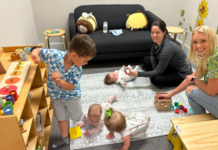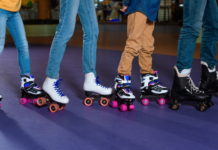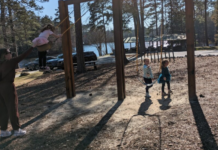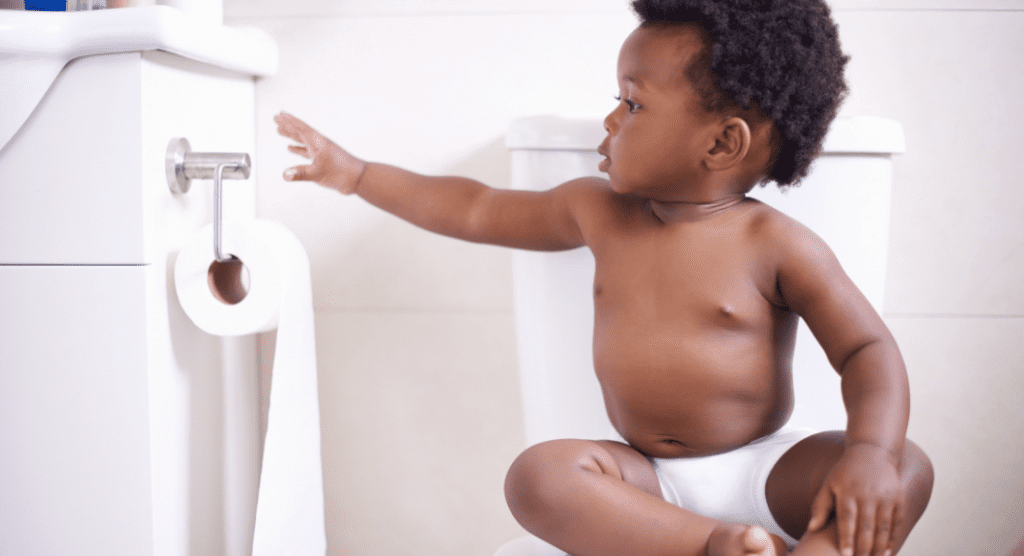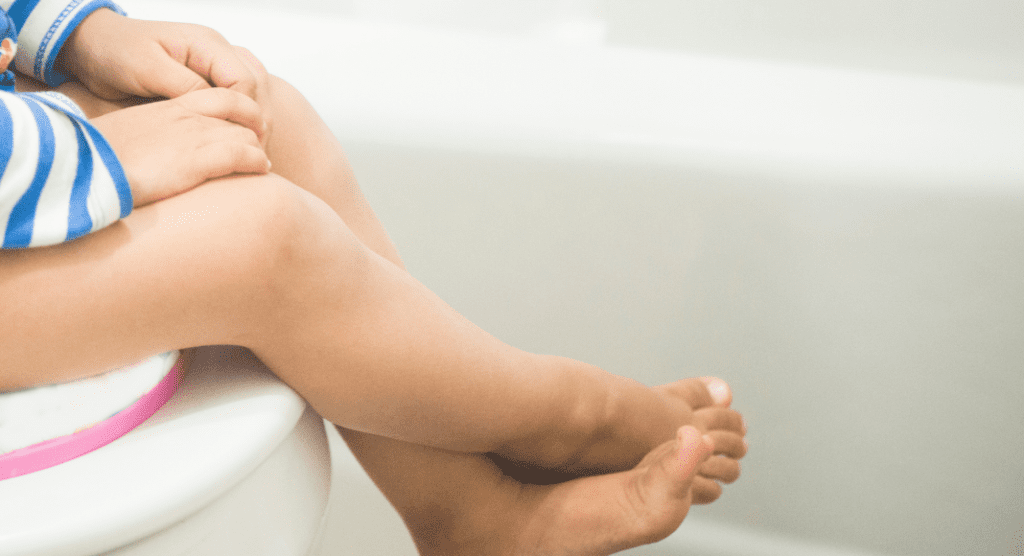 As we approach summertime, you may be thinking of warm weather, traveling, dips in the pool, and potty training. Wait. Potty training?! Yep! Believe it or not, summer is a popular season to make the big switch. So much so, that June is national potty-training month! Here’s a review of some common tips for getting through this huge milestone.
As we approach summertime, you may be thinking of warm weather, traveling, dips in the pool, and potty training. Wait. Potty training?! Yep! Believe it or not, summer is a popular season to make the big switch. So much so, that June is national potty-training month! Here’s a review of some common tips for getting through this huge milestone.
Reasons to Potty Train in the Summer
- Hotter weather means lighter clothes, and lighter pieces are better for increasing bodily awareness when your child has any bladder/bowel sensations, or an inevitable accident.
- Fewer clothing layers also mean less laundry to wash when those accidents do happen.
- Some families have more time at home in the summer, which allows parents to be more focused and consistent with training.
- More time outside also means increasing the odds of those messy accidents happening outside instead of inside!
The “gold standard” potty-training method changes often. Many families choose a method based on what resources are most available (via social media/news/journals, advice of family/friends, past experiences with potty training), what they feel most confident with, or what works best with their season of life. We started potty-training our two-year-old last month just as the weather began warming up, and thought over what potty training advice we’d seen or received that has been most useful.
What Worked for Us
Whether you choose to take your child through a fully nude, three-day committed crash course into potty training, or you ease them into a long diaper wean with transitional tools, here are some common tips that we loved as first-time potty training coaches!
1. Be sure your child is ready
There is a wide range of “normal”, and the decision to start training should not be purely age-based. Common signs of readiness are:
- Increased bladder capacity (going longer between wets)
- Hiding to poop or pee
- Increased interest in the toilet/bathroom process
- Your child communicates their bodily functions or needs
- Does not like to be dirty or wet
- Able to perform basic undressing
2. Lots of potty exposure
Change can be scary at any age, so make this transition FUN with entertaining examples of potty training for your child.
Books:
- P is for Potty
- Daniel Goes to the Potty (Daniel Tiger’s Neighborhood)
- Dino Potty
- Super Pooper and Whizz Kid: Potty Power!
- Let’s Go to the Potty!
TV/Videos:
- Daniel Tiger’s Neighborhood – S1,E11 “Prince Wednesday Goes to the Potty”
- Elmo’s Potty Time
- Peppa Pig: Potty Training
- Princess Polly’s Potty
Songs:
Games:
- Pretend Play – Have dolls or toys pretend to go to the potty in front of your child
- Practice: Have your child take the toy to the bathroom and practice
3. Model the proper restroom procedures for your child
If you’re comfortable, invite the training child to the bathroom as you go. Try not to force them to follow; leave the door open or cracked, and narrate as you go. Let them see that using the toilet is NOT bad or shameful.
You can also try this with an older sibling. Have your little one go into the bathroom with their (already potty trained) older sibling. Going with an older sibling might be a little more fun for them, and less awkward for you.
If you are potty training your first child or are not comfortable using this method, an alternative to this is to invite them into the bathroom just for flushing and/or washing hands. Every bit of exposure helps!
4. Mind your language when discussing poop
Studies have shown positive language around bowel movements can shorten the potty training process. Avoid terms like “yucky” or “gross,” and try to remain calm during poop accidents or clean-ups.
You know your child best! “Smelly” and “stinky” could be positive, silly words for some children and don’t need to be avoided. While other children may feel shame with such words applied to them or something they did. The childhood experience is vast!
Doctors strongly recommend using proper anatomical names with children. Since we co-potty trained with daycare, this was especially helpful for us so that our daughter did not use ambiguous terms for genitals that could frustrate communication at home or school.
5. Go nude (if they can)!
Summer is a great time for naked potty training! This helps children recognize when they’re having an accident, and associate that urge with needing to visit the potty.
Most quick “crash course” methods urge caregivers to keep their child naked 100% of the time for those first few days of training. Even with being at home, this didn’t work for us. But getting outside into an inflatable pool/splash pad at home or other water activity was the best way we found to make this work. And it had the added benefit of minimal cleanup after accidents!
6. Accept that accidents are going to happen
If we have the right expectations, we can better control our responses and keep potty training a positive experience. Try not to get upset or frustrated when your child has an accident. Instead, remain calm, clean up the mess, and move on.
What Didn’t Work for Us
In order to keep this an honest, transparent review, I want to also share with you some methods that did not work for us. But, remember, every child is different. So, while these didn’t work for us, they may work for you.
1. The potty timer watch
The potty timer watch was a failure for us just as soon as it started. In true toddler fashion, my daughter decided she didn’t like the potty timer watch and REFUSED to wear it. We tried multiple days, presenting it to her as a special treat. But she had us figured out. However, this is a popular and trending tool right now among parents. And, even though it didn’t work for us, we are still glad we tried it.
2. Going to the bathroom often
Some potty training consultants, or experienced parents, suggest taking your child to the bathroom at short, regular intervals to avoid accidents. We found this was only stressing everyone out, and our toddler was not going within short intervals when prompted. After a while, we found a pattern of trying every two hours. This seemed to fit our toddler’s natural cadence and bladder capacity best. It translated to a higher success rate of going on the toilet with minimal accidents.
3. Watching for body language cues
Your little one will start presenting physical signs that they need to go to the bathroom. Top signs to look for are squirming around, grabbing their crotch, hiding, or a sudden mood change. The problem with this is our toddler often squirms, hides, and has big mood changes for reasons OTHER than an urge to poop/pee. Trying to figure out when she needed to use the bathroom just based off of body language did not work for us. Her body language was indecipherable and trying to figure her out only added extra stress to the process.
What common potty training tips did you find most (and least) helpful?

